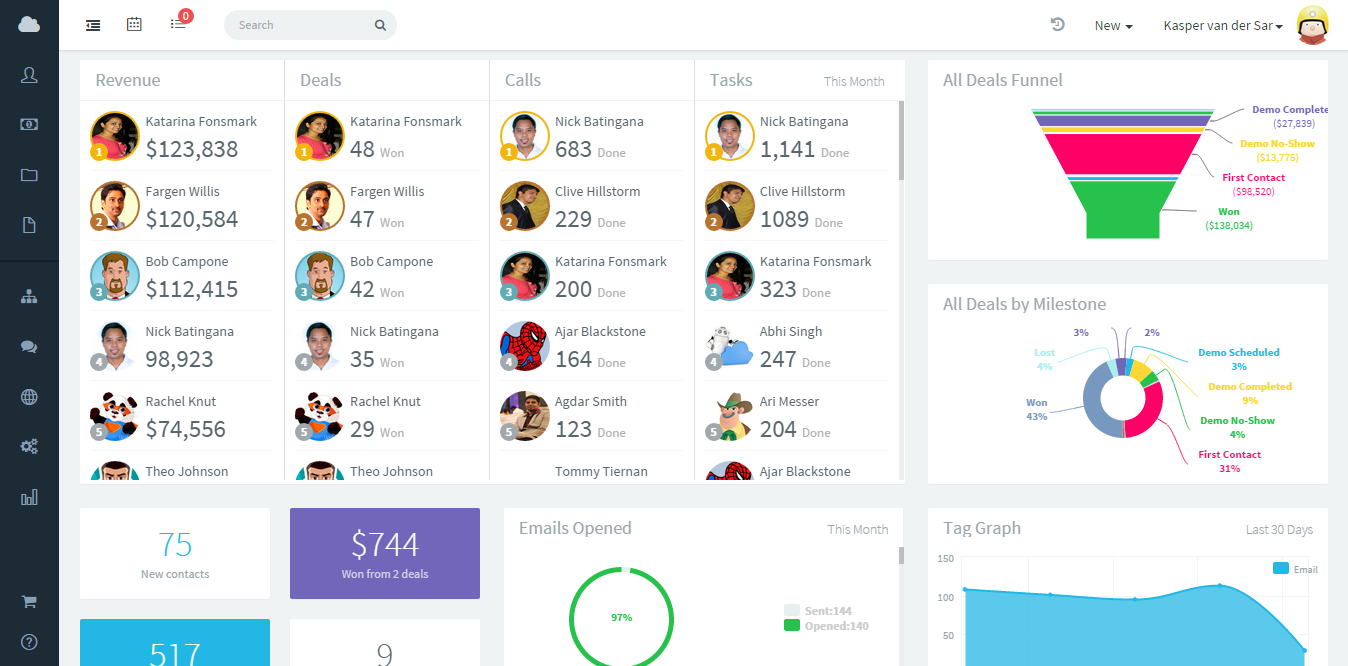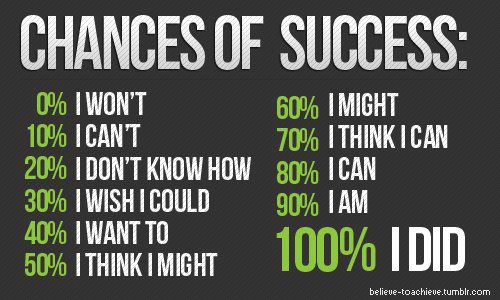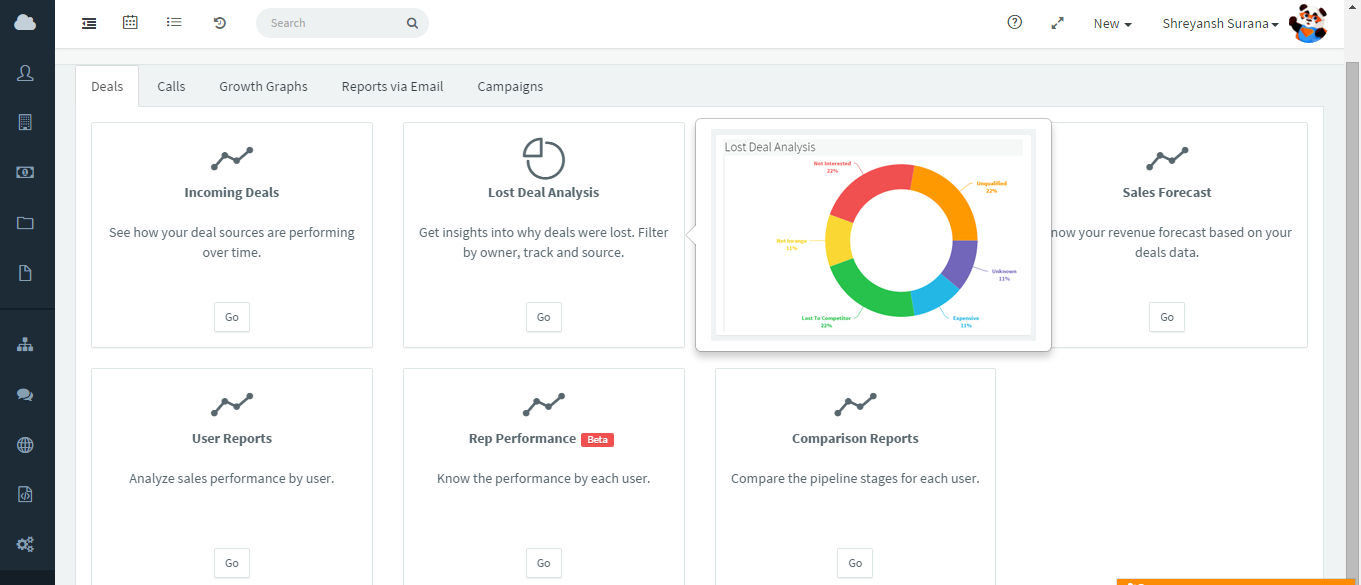Sales Team Zen: 4 Steps to Agile Gamification
There are a lot of reasons that we built sales gamification into Agile CRM, but there’s only one thing our customers need to know: when you gamify sales, you get results.
Results are great, but know what’s even better? Bigger results that keep on getting bigger, and smarter automation that’s automatically personalized for your sales team, just like the customer journey is automatically personalized for your contacts and leads. If you really want to reach sales team zen, you need to exceed your goals every single day by establishing a clear gamification strategy.
The gamification process can always be further optimized to fit your particular sales pipeline, work process, team dynamics, pitch cycle, business culture and onboarding strategy. In addition to our popular sales leaderboard feature and custom email reports, we’ve been adding new features to help SMBs gamify sales, including a sales goals (quotas) feature and a bunch of new sales reports. And clearly those new features are paying off. As we’re starting to push the 7,000-customer mark, we thought this would be a good time to take a closer look at what works best — and what should be avoided — when it comes to Agile Gamification.
1. Set Realistic Sales Goals
Since we introduced sales goals into Agile’s Deals feature, along with associated dashboard widgets, our customers report a marked improvement in sales numbers. Coincidence? We think not. After all, setting realistic goals isn’t just hype, it’s science.

The first step to Agile Gamification is to set realistic sales goals and then to adjust them on a regular basis. We recommend a weekly assessment of your sales quotas at first, but every team is different. It’s counterproductive to set unachievable goals, but it’s also not helpful to set goals that are way too easy to achieve. Luckily, our sales software is totally customizable for any situation.
Hint: Remember to set goals for both Deals and Revenue. This helps your sales team make sense of how gamified sales processes fits into larger business goals and your team’s KPIs.
2. Predict the Future by Understanding the Past
Unfortunately, a lot of separate gamification products on the market are full of bells and whistles but lack integration into the overall sales process, let alone the complete customer lifecycle. Agile CRM’s gamification features, on the other hand, are a breath of fresh air. We built them around the actual sales processes that your entire team — SDRs, sales reps, call center staff, top sales executives and customer success advocates (technically-minded sales and support staff) participate in on a daily basis.
The second step to Agile Gamification is to take some time to get to know our advanced sales analytics. Seriously. Take some time to play around with the reports, apply different filters, , and just generally explore the functionality. Once you’ve found the best reports and settings for your sales process, add them to your main Agile dashbaord for real-time reporting next to your main gamification leaderboard and sales goals stats.
3. Work as a Team
Gamification is no longer just a novelty, it’s a powerful and persistent tool to encourage rather than threaten your team and your organizational family into moving the mission forward with the sort of efficiency and impact that usually gets lost between the C-suite and the staff.
— Chris Abraham, “Enterprise Gamification is a Spoon Full of Sugar”
Obviously, we all agree that sales and marketing should work together. After all, that’s why the most successful businesses choose Agile CRM in the first place. But is your sales team working together as closely as they should be?
The third step to Agile Gamification is to emphasize how teamwork and collaboration are the backbone of individual success. Nobody can build a business alone, and sales quotas are meant to encourage a sense of vitality, not a sense of dog-eat-dog chaos. To gamify sales from the teamwork perspective, ask yourself these questions:
- Is everyone working toward the same goals?
- Are more experienced sales people mentoring less experienced sales people and sharing knowledge, or are they competing for the same clients?
- Does your team have clearly defined KPIs?
- Does everyone have the tools they need to exceed their sales goals? (This includes both large-scale tools like sales software and the right hardware, and micro-tools like documents attached to deals.)
- Are you automating appointment scheduling and other tedious tasks, so sales team members can spend time actually selling?
4. Exceed as Individuals
If gamification is always about both competition and collaboration, then you might think of Agile CRM as both your coach and your trainer.

The final step to Agile Gamification is not to hold back when it comes to real competition. The results of individual sales empowerment help not just sales (more sales, bigger sales, customers with a higher chance of retention) but also professional growth and staff retention. In order to find success as a solo player on a driven team, make sure you’re personalizing these CRM features:
- Set up a personal leaderboard in addition to any company or bigger sales team leaderboards. In other words, gamify your own selling.
- Create custom email reports based on lead scoring, customer web activity, or anything else that’s important to your personal sales process.
- Set tasks for yourself, including both easy tasks and difficult tasks, on a daily basis. Don’t just let others set tasks for you.
How does your business gamify sales? We’d love to hear about your experience with sales gamification. Share your comments below.
PS. Don’t start the gamification process until you’re up and running with basic Marketing Automation and Sales Enablement in Agile CRM.


1 Comment
blogs
about 8 years agoI read this article fully on the topic of the resemblance of most up-to-date and earlier technologies, it's awesome article.
Reply